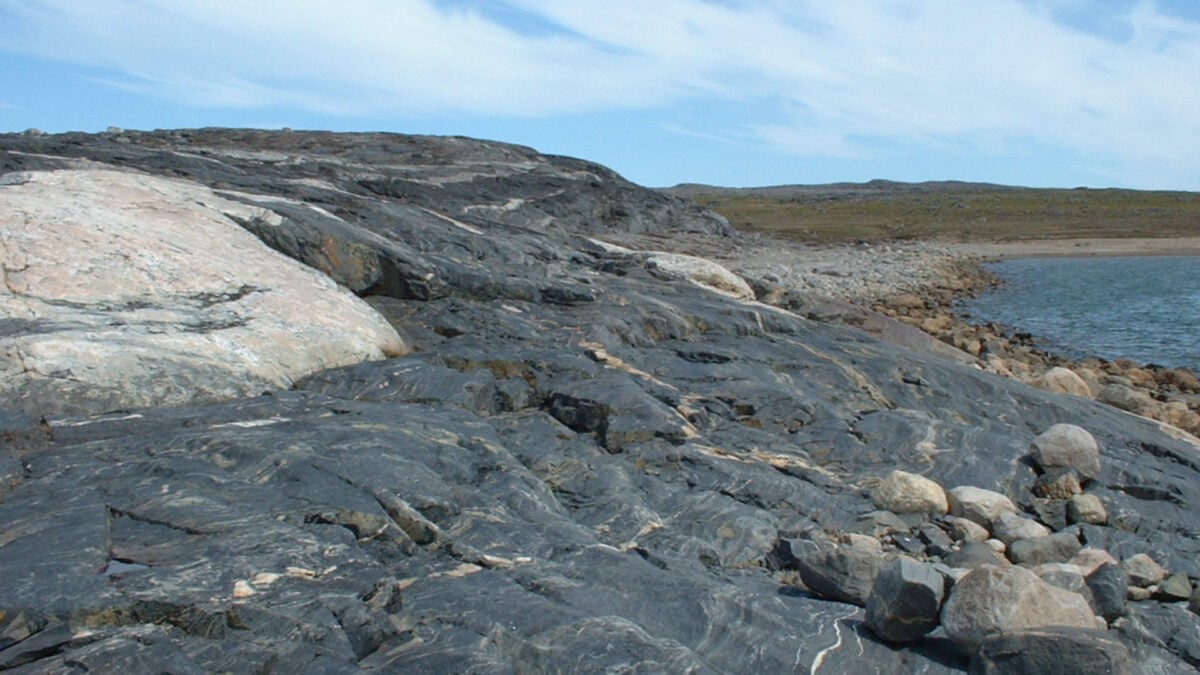Due to the movement of Earth’s tectonic plates, our planet’s crust is constantly recycled, making rocks and minerals from its earliest days incredibly rare. That’s frustrating for geologists, since surface-level Hadean rocks (rocks older than 4.03 billion years) could provide significant insight into the first geological stages of Earth’s 4.5-billion-yearhistory.
In a study published today inEarly Earth, researchers from Canada and France suggest that the Nuvvuagittuq Greenstone Belt (NGB)—a rock formation in northeastern Canada—might contain Hadean rocks dating back to around 4.16 billion years ago. While this date differs from previous controversial research identifying NGB rocks as old as 4.3 billion years, it nonetheless bolsters the broader theory that the rock formation hosts remnants of Earth’s earliest crust. If the new study proves to be true, it could hold significant implications for our understanding of the planet’s most ancient history.
“Many questions remain regarding Earth’s earliest crust owing to the rarity of Hadean (>4.03 billion-year-old) rocks and minerals. The Nuvvuagittuq Greenstone Belt (NGB) in Canada may be the only known remnant of Hadean crust, although its age is debated, ranging from ≥3.75 to 4.3 billion years old,” the researchers, including the University of Ottawa’s Department of Earth and Environmental Sciences professor Jonathan O’Neil, explained in the study.
One of the most common ways to date rocks is via radiometricdating, which involves measuring the radioactive decay of isotopes—different versions of elements. The claim that some NGB rocks might be up to 4.3 billion years old is controversial because some researchers maintain that the isotopic data upon which the estimate is based may actually be the result of “later geological mixing processes” instead of the rock’s true age, according to an American Association for the Advancement of Sciencestatement.
In the new study, O’Neil and his colleagues investigated ancient rocks in the NGB called metagabbroic intrusions. Simply put, these metagabbroic intrusions interrupt older basaltic rocks, a characteristic the researchers claim enabled them to combine different isotopic analyses to reveal a lower age limit for this older material. Specifically, data involving the decay of samarium isotopes into neodymium isotopes consistently pointed to a minimum age of 4.16 billion years.
It remains to be seen whether the question of the NGB’s true age will ever truly be settled. The recent study comes in the wake ofnew research on prehistoric footprints, also considered controversial because of its dating technique. More broadly, both papers emphasize the importance of critically evaluating dating methods, especially those that might underpin significant historical implications for both humanity and our planet.
Get the best tech, science, and culture news in your inbox daily.
News from the future, delivered to your present.
Please select your desired newsletters and submit your email to upgrade your inbox.
From Parisian bridges to Rome's Trevi Fountain, tourists love leaving behind mementos—but in Northern Ireland, they're eroding a 60-million-year-old landmark.
A seemingly out-of-place boulder in Tonga hints at a massive tsunami that hit the region 7,000 years ago.
Researchers warn that current land management models don't account for accelerated, human-driven rock formation processes.
Cores extracted from the impact crater revealed evidence of an ancient, life-nurturing hydrothermal system in the wake of the catastrophe.
The Palos Verdes Peninsula is sliding by much as 4 inches (10 centimeters) per week, putting hundreds of buildings at risk.
Researchers identified geological features that point to a single massive flooding event that refilled the Mediterranean Sea 5.33 million years ago



 Motivational
Motivational 22 Jul, 2025
22 Jul, 2025 Harper Martin
Harper Martin